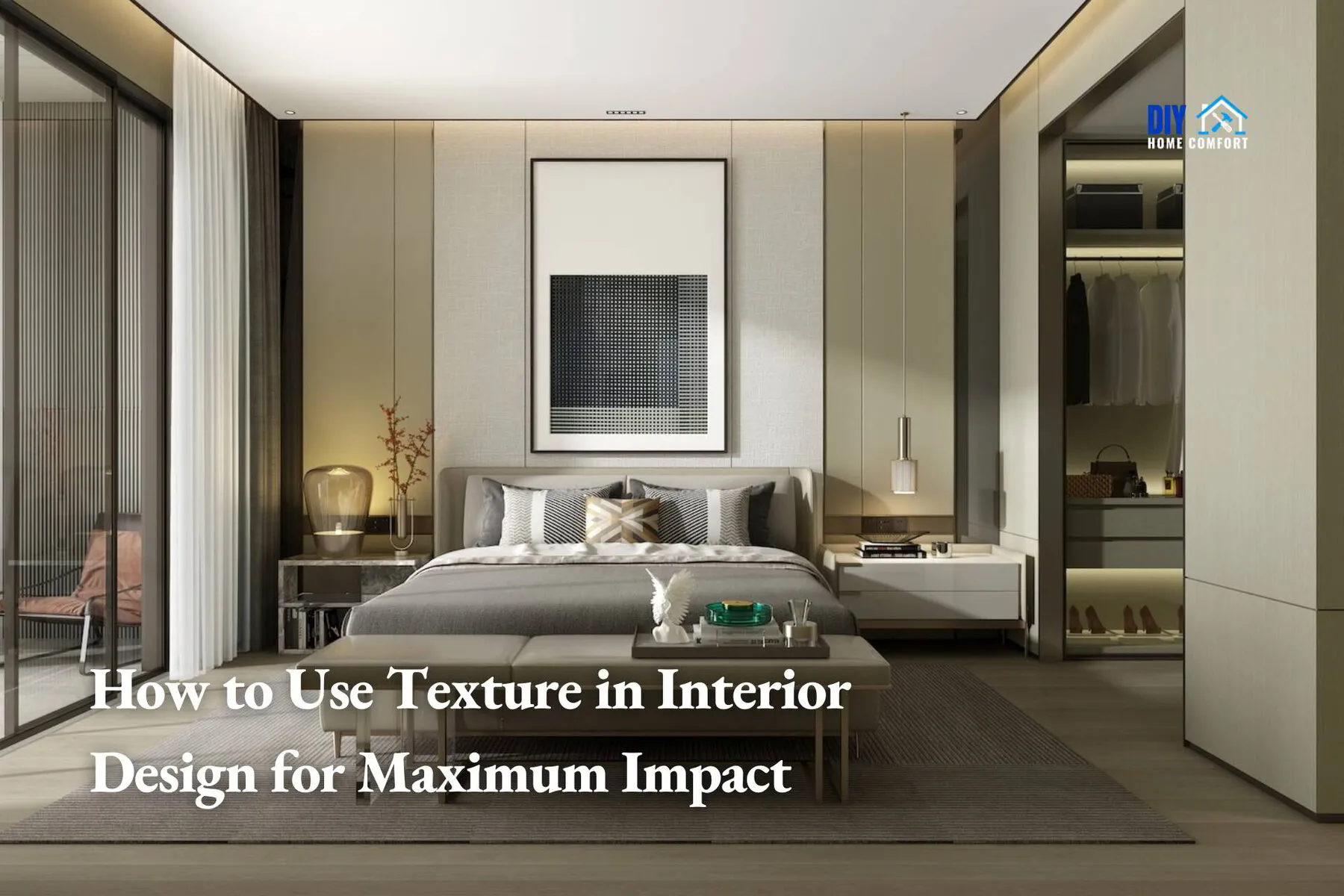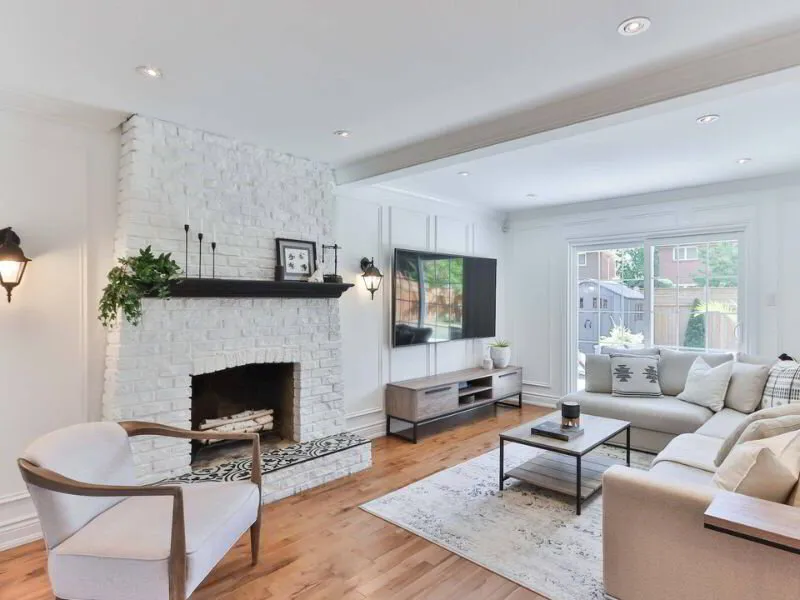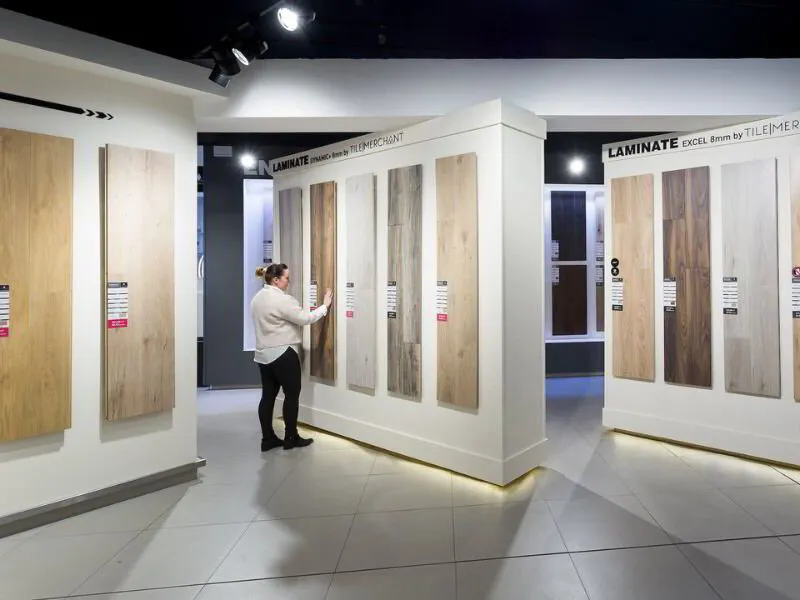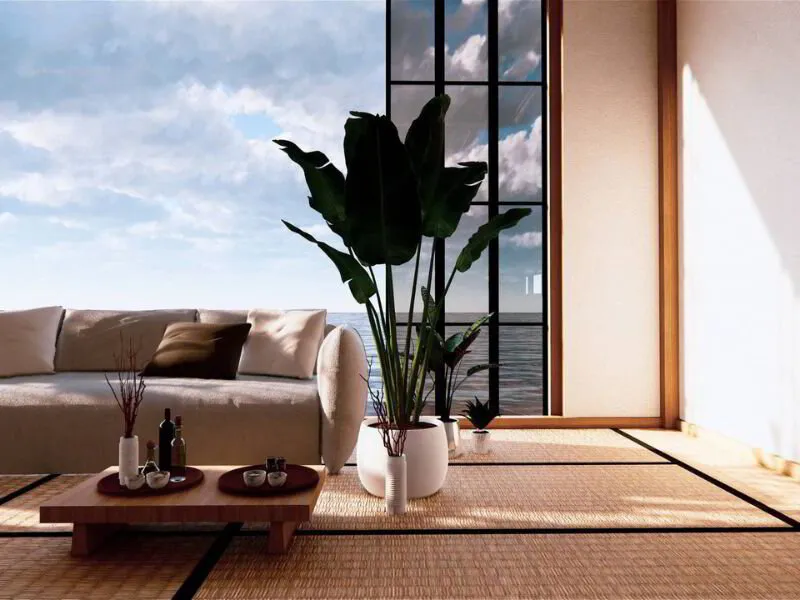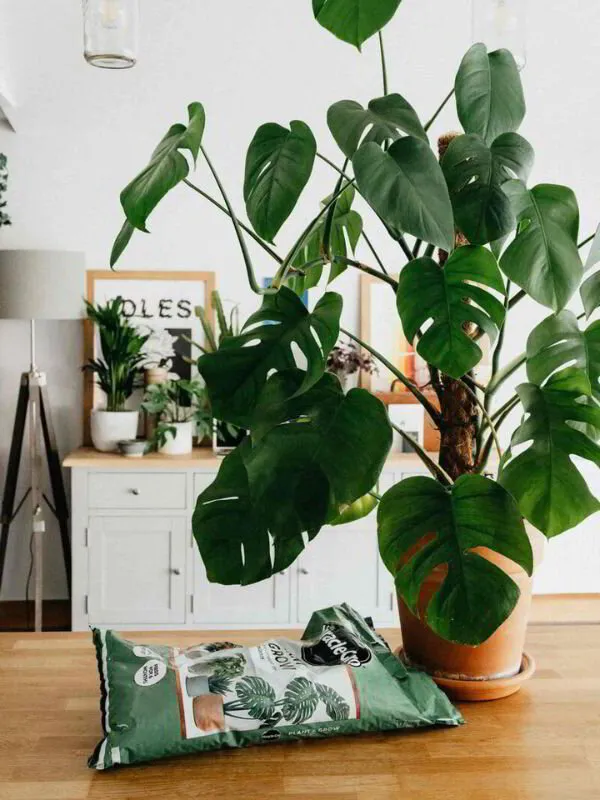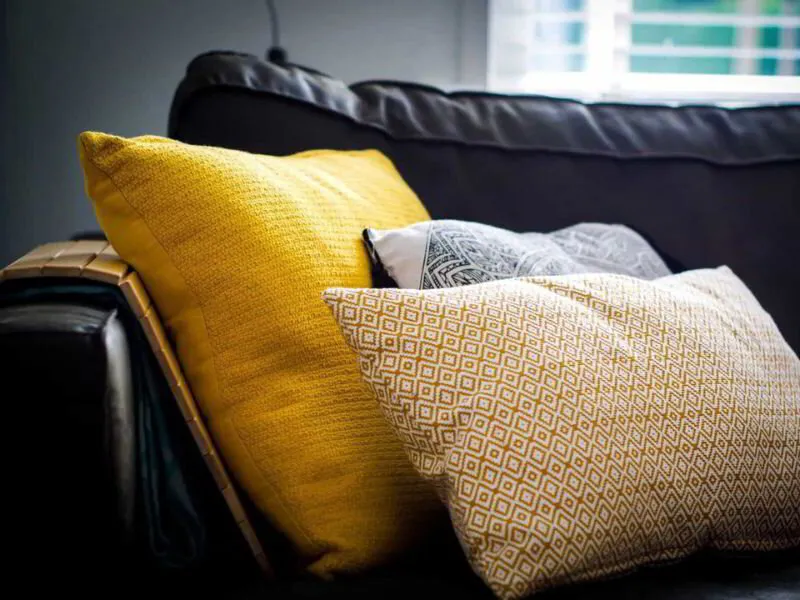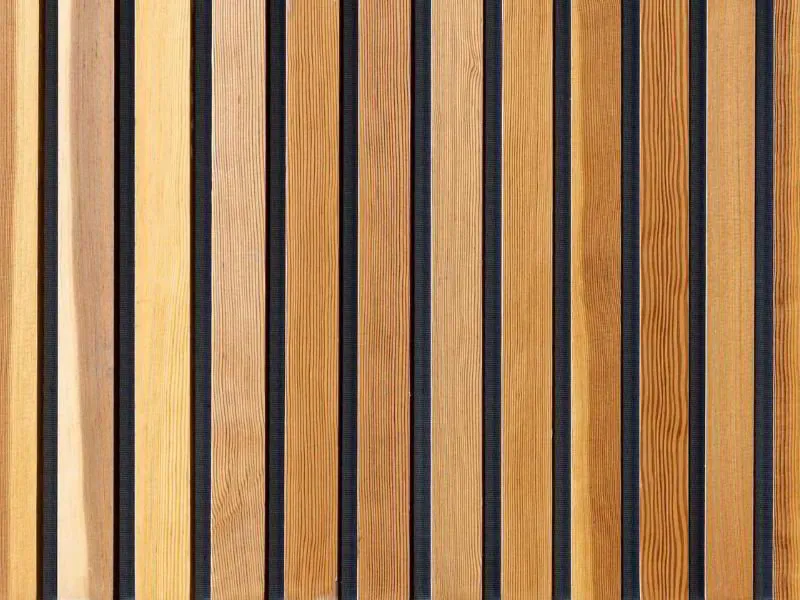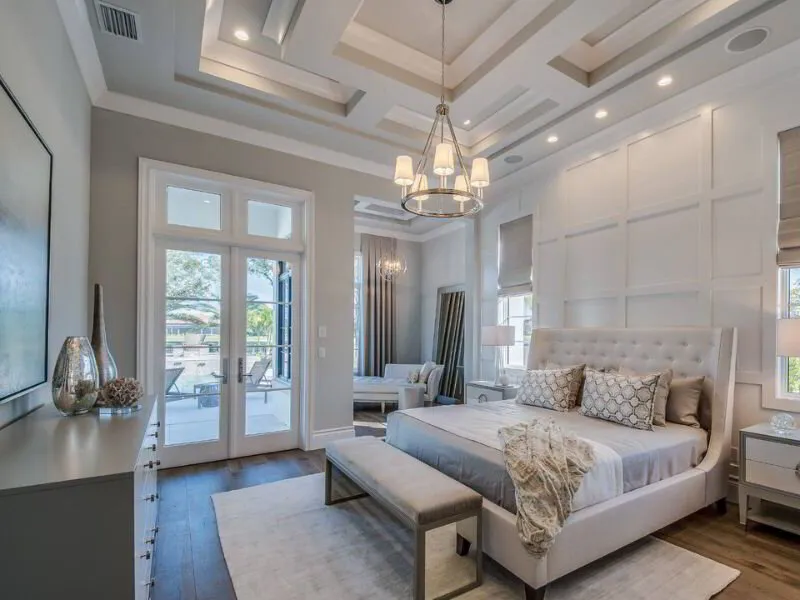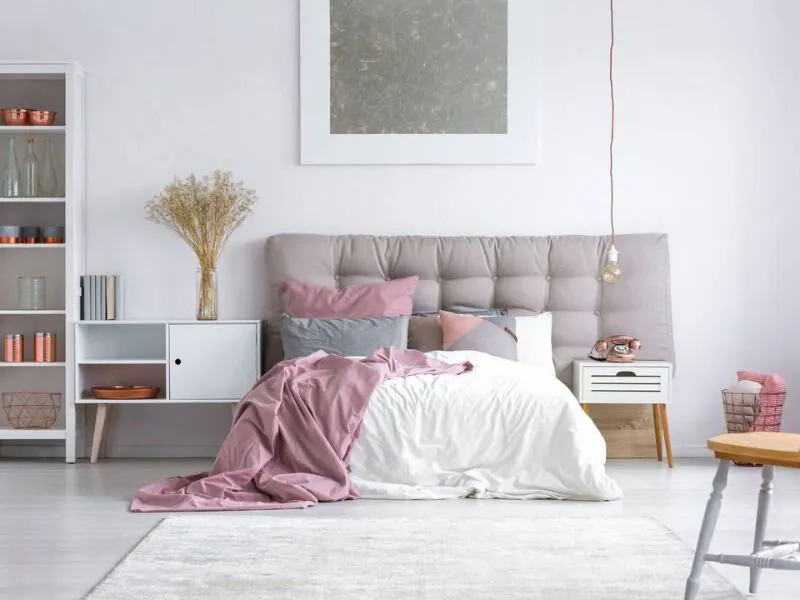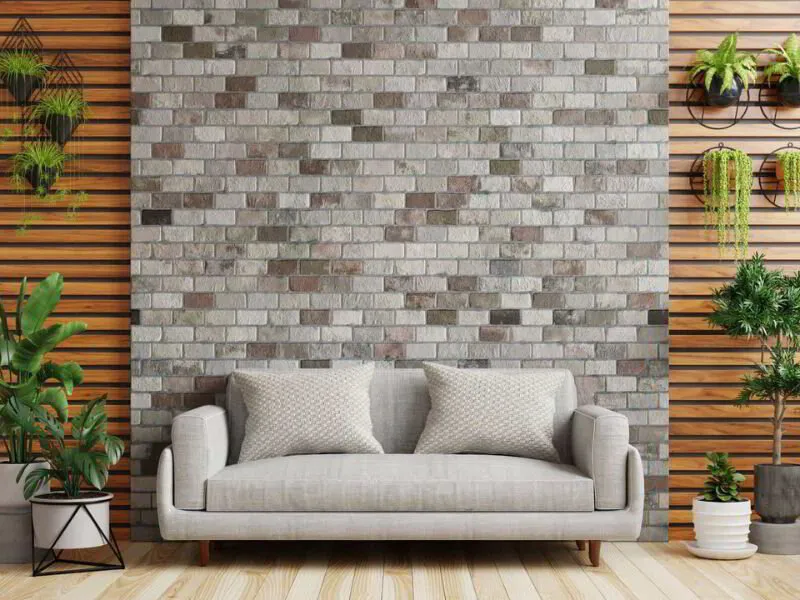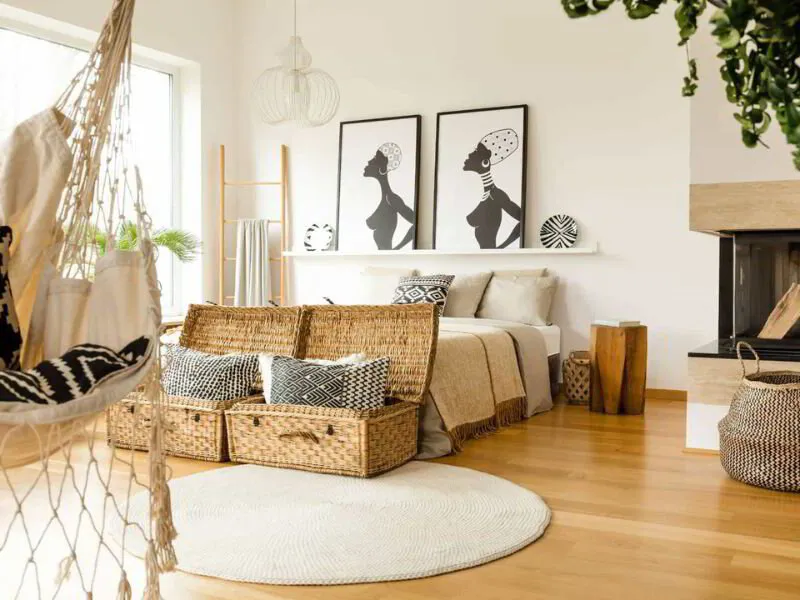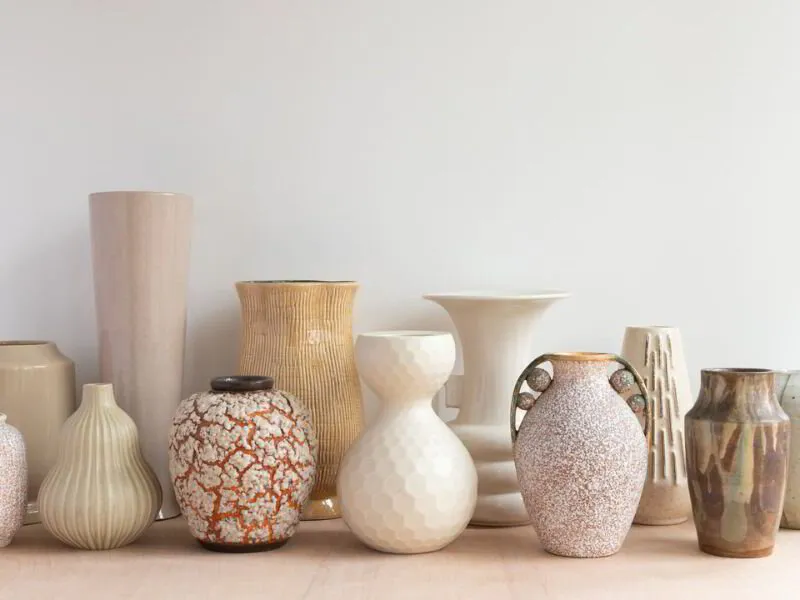Are you a budding interior designer and want to move your interior design game up a notch?
Textures can be a powerful addition to your décor, creating depth and interest in almost any room.
Whether you’re looking for ways to spruce up an otherwise dull living space or area or give each space its own unique look, incorporating creative textures is the perfect way to achieve your goal.
With some innovative ideas and clever use of materials, you can transform any room into an inviting and stylish haven that looks like it came off the pages of a magazine!
In this blog post, we’ll go over all the different ways textured materials can be used in interior design so that you will have plenty of inspiration as you embark on your own home transformation journey!
📘 Key Takeaways
- Texture in interior design adds depth, visual interest and creates a unique atmosphere in any space.
- There are two main types of textures in design: tactile (how something feels) and visual (how something looks).
- Incorporating various textures, from fabrics to stone, can evoke emotions and stimulate creativity in a room.
- Texture can be introduced through structural elements, furniture, decorative accents, wall and floor coverings, and textile materials.
- Using texture in combination with light, scale, and color can transform a space, making it more inviting and aesthetically pleasing.
What is Texture in Interior Design?
Texture in interior design is a design concept used to create a visually appealing space through the use of tactile materials and surfaces.
It can refer to anything from fabric textures and wallpapers to smooth textures created by stone, wood, and metal finishes.
Texture helps create a sense of volume, depth, and visual weight in a space.
It can create contrast between different materials or unify a room with similar textural elements.
By manipulating texture in an interior design setting, creating a unique atmosphere that evokes emotion and stimulates creativity is possible.
Understanding the Impact of Texture in Interior Design
Texture is an important design element that can bring a room to life and create a truly unique atmosphere.
Texture adds depth and visual interest, helping create balance in a space.
It gives the eye something to explore and is integral to creating atmosphere and character.
By carefully selecting different textures such as fabrics, wallpaper, carpeting, stone, wood, and metal finishes, it is possible to evoke emotion and capture the imagination of those who spend time in a particular space.
Texture also helps create accents and add contrast between different materials, thus making spaces look more interesting and inviting.
Different Textures in Interior Design
In interior design, there are two types of textures: tactile and visual.
Tactile texture captures how an object feels when touched, while visual texture influences the atmosphere of a room or space through its look.
Exploring both can help to create a unique and engaging space in any home.
Tactile Texture in Interior Design
Tactile texture captures the feeling of physical contact with an object when touched.
Examples of this kind of texture include fabrics such as cotton, velvet, and denim; carpets with different piles and colorations; stone in its natural form; wood that adds warmth and character to a room; and metal finishes like stainless steel or copper.
Applying tactile textures can create depth, richness, and comfort in any interior design space.
Visual Texture in Interior Design
Visual textures are equally important for creating emotion through design.
Colors, patterns, materials, and art pieces can be blended together to form an atmosphere that reflects its inhabitants' personalities and design styles.
Textured wallpaper, vibrant accent pieces, and an array of different fabrics can all be utilized to create a unique space with lasting appeal.
Visual texture is essential in bringing character and atmosphere to any interior setting.
Where Texture Can be Placed in Interior Design?
To make a room come alive, texture is essential.
From tactile textures such as metal and stone to visual touches like fabrics and art pieces – these elements combine to create an atmosphere that reflects the personality of its occupants.
When used right, texture has the power to bring depth and warmth to a space, making it more inviting and enjoyable.
Here are some ideas on how you can place texture:
Structural Elements:
Architectural components such as beams, window frames, and doors can also add texture and interest to a room.
Furniture:
Rugs, upholstered chairs, and side tables can add texture and create an inviting atmosphere.
Decorative Accents:
Shadow boxes, trinkets, and flowers could be used for decorating.
Floor and Wall Coverings:
Arranging a rug or setting up a partition with a clever design can add a lot of depth to the room.
Textile Materials:
Incorporate fabrics such as slipcovers, throw pillows, and covers to make the room more striking.
How to Use Texture in Interior Design?
Texture plays a major role in interior design and can be used in many ways to achieve a desired outcome.
In general, texture can be used in interior design in the following ways:
Use Texture and Light to Transform a Space:
Rough textures bring an inviting warmth to a room, absorbing more light and creating a distressed, rustic aesthetic.
On the contrary, smooth, shiny textures that reflect more light provide a sleek, modern visual appearance and give off a cool ambiance.
Bringing Dimension with Texture & Scale:
Working with scale when pairing textures can effectively create more visual weight and interest while also making a room feel lighter and more inviting.
The Magic of Texture & Color:
When used together, color and texture can provide a perfect balance.
A matte finish on an item will absorb light and give off a darker tone which can greatly support the overall color scheme of any space.
1. Bring Nature Inside with Plants & Flowers
Incorporate a touch of nature with organic succulents, artisan ceramics, woven baskets, raw geodes, and wooden spheres to add texture to your room.
This will create a tactile and inviting look while providing a sense of peace, warmth, and tranquility.
Natural beauty has an enduring allure that can't be beaten.
📘 Related Reading: Using Form in Interior Design to Create a Unique and Beautiful Space
2. Unlock the Potential of 3D Art in your Home
Enhance the beauty of your home with irresistible sculptural wall decor for a personal touch.
With metal art, macramé hangings, and vintage signs in modern, bohemian, and country styles available, it's easy to find pieces that will make your room both aesthetically pleasing and balanced.
3. Layer Your Home with Pillows and Throws
Why not add comfort and texture to your room?
You can do this by bringing in layering pillows, scatter cushions, and throws.
Enjoy the feeling of touchable textures by incorporating pillows into your decor, and top it off with luxurious throws for an extra special touch.
6. Spice Up Your Home with Contrasting Fabrics
You can use upholstery techniques like tufting to create an intriguing visual texture in your home.
Start by adding small items like a tufted footstool and spruce it up with some nailhead tacks.
Create a luxurious look by making a tufted headboard.
Change the plain fabric surface into beautiful home decor with pin-tucked blankets, pillows, and drapes.
8. Add Decorative Flair to Any Room with Textual Wall Coverings
With all the components and variety of options available, you can incorporate a unique style that will draw attention and admiration.
Grasscloth and cork are popular choices for adding texture without overwhelming the design.
Whether you're looking for something subtle or more dramatic, textured wall coverings can help you create a one-of-a-kind look that makes your home stand out from the rest.
Related Reading: Exploring Sustainability in Interior Design
9. Transition Your Home with Layerable Textures
Combining various textiles will enhance the appearance of any room, giving it a luxurious feel.
For an added bit of flair, consider fiber like jute rugs underneath.
Additionally, silk draperies provide a sheen that cannot be matched with cotton fabrics.
Putting together a mix of different textures will make all the difference in your home's design!
10. Make a Statement With Textured Furniture
Whether it's marble tabletops, a velvet armchair, or faux-fur pillows, textured furniture can bring comfort and style to any interior design.
It adds a unique dimension to your home and will help set the tone for the entire room.
Furthermore, textured wood furniture has proven to be an increasingly popular trend in interior design due to its ability to make any space feel inviting.
11. Play With Textured Home Accessories
Vases, ornaments, sculptures, and mirrors are perfect for introducing texture into any room.
When thoughtfully arranged with pieces of varying textures, these accessories can create a stunning and eye-catching display.
It's essential to limit the number of textured items in the room so that it does not become overwhelming.
The idea is to have an interesting mix of objects with contrasting textures, to enhance one another and give the space a layered and inviting feel.
12. Don’t Forget Lighting
Lighting is a fantastic way to add texture and character to any space.
From the style of lamp used to the color temperature of the bulb to where it is placed in the room—each element adds its own unique touch.
For example, a chrome floor lamp will provide a different feeling than a hammered bronze wall sconce, while cool white light produces brighter and more contemporary lighting than warm white light.
Positioning lamps in different corners or at various heights throughout the room can also create waves of illuminated texture that will further enhance the atmosphere in your home.
Final Thoughts on Texture in Interior Design
Adding texture to a room can make all the difference to the atmosphere you create.
It can bring an otherwise featureless space to life, making it more homely and calming.
Different types of textures, be it fabrics, raised textures or patterned wallpapers, can help you mix and match different colors for your desired effect.
A well-crafted design using texture will add depth and interest to any space.
Just remember that subtlety is key!
Slightly adding a different texture here and there can be far more effective than going overboard with too many elements from the outset.
Check out our other interior design articles in the series for more design inspiration and to learn more about interior design.
📘 Related Reading: The 7 Elements of Interior Design
Lara Harding
Lara is a supporting author @ DIY Home Comfort. She's an experienced interior designer and decorator and a full-time mom. You can find out more about her here.
